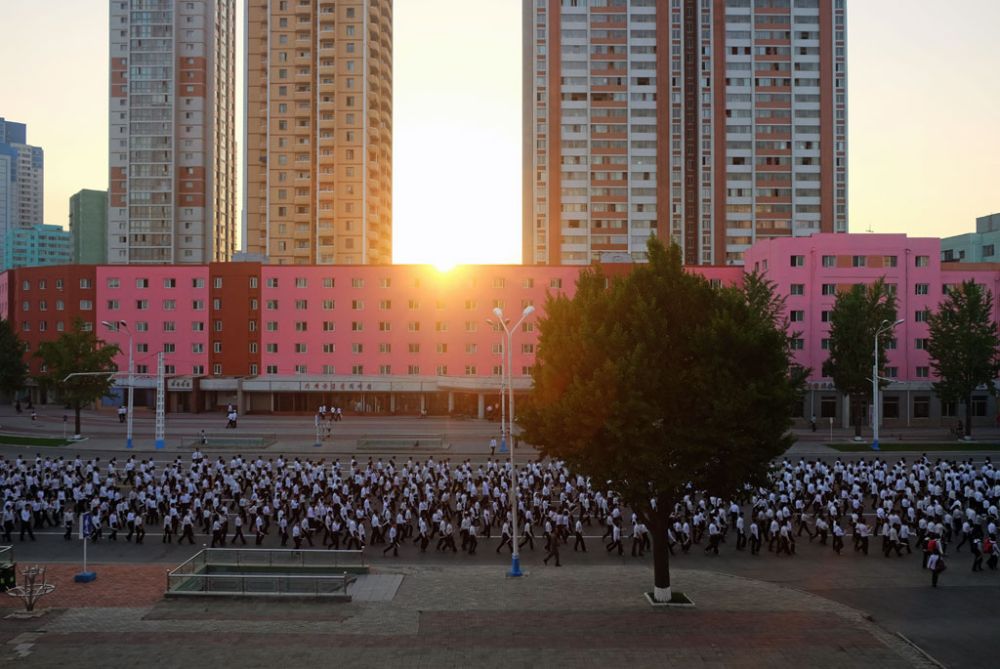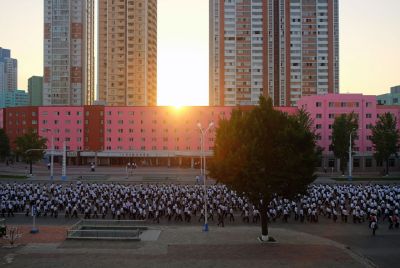

Panmunjom is the historic site of the 1953 Armistice Agreement, which paused the Korean War and is now a significant location within the Demilitarized Zone (DMZ). Here, visitors can set foot in one of the most tense and politically charged places on earth. The area includes the iconic blue huts where military negotiations occur, straddling the Military Demarcation Line (MDL). This is the only place where South Korean and North Korean forces stand face-to-face. A visit to the JSA usually involves a strict security briefing followed by a guided tour, where knowledgeable guides explain the historical context and significance of the site. It's a profound experience for those interested in world history and geopolitics, providing an insightful look into the stark realities of division and the hope for peace that persists.
Discovered in 1978, the Third Infiltration Tunnel was dug by North Korea as a potential path to invade the South. It is one of four known tunnels beneath the Demilitarized Zone. Visitors can don hard hats and venture into the depths of this tunnel, which reaches up to 160 feet below the surface. The tour includes a steep walk down through a dimly lit passage and offers a tangible sense of the military tensions on the Korean peninsula. The site also has an exhibition hall with information on the Korean War and the ongoing division of Korea. The experience is often solemn and thought-provoking, as it underscores the lengths to which conflict drove both sides during the Cold War.
Situated in Kaesong, the Koryo Museum is housed in a beautiful complex which was once a Confucian academy. It offers visitors a glimpse into the Koryo Dynasty, which ruled Korea from 918 to 1392. The museum holds an impressive collection of historical artifacts, paintings, pottery, and ancient Korean coinage. Its detailed exhibits provide an overview of the sophisticated culture and achievements of the period, including the invention of the world's first metal movable type. The serene surroundings and traditional architecture of the museum compound add to the ambiance, making it a pleasant and educational experience for history buffs and cultural enthusiasts alike. The onsite souvenir shop offers unique local crafts, including the famous Kaesong Ginseng.
Step back in time with a stroll down Old Kaesong Merchant Street, an area that once brimmed with trade and commerce during the Joseon Dynasty. This historical street provides a rare opportunity to see traditional Korean architecture and imagine the bustling energy of ancient markets. While the area has seen modern developments, there are efforts to preserve its historical value. Visitors will find shops selling traditional goods, and it's an ideal place to buy authentic souvenirs. The street also offers a variety of local snacks and street food that cater to the curious palate—providing a taste of local cuisine and the chance to interact with residents in a more relaxed setting.
The peace pagoda is strategically positioned on a hill overlooking the DMZ, offering panoramic views of the surrounding area, including North and South Korea. Erected as a symbol of hope and reunification, the pagoda is an important place for reflection on the division of the Korean peninsula. Visitors climb the pagoda for a better vantage point, from which they can often see North Korean propaganda villages and border activities. The lookout point often includes telescopes for a closer look and is sometimes accompanied by a guide who can explain the current state of affairs. It's a poignant spot that encapsulates the longing for peace in part of the world where conflict and separation have left deep scars.
Sonjuk Bridge is a historical stone bridge in Kaesong, North Korea, dating back to the Koryo period. It is recognized for its simple yet elegant design and is a protected cultural relic—a testament to the craftsmanship and architectural style that prevailed in ancient Korea. The bridge is steeped in history and was the site of the assassination of the famous Korean scholar and statesman Jeong Mong-ju in 1392, an event that had significant political repercussions at the time. The importance of Sonjuk Bridge isn't just in its structure but the stories and legacy it represents. Although the visit doesn't take much time, it offers a meaningful reflection on Korea's history and is often included in heritage tours of the Kaesong area.
For those interested in a unique accommodation experience, the Kaesong Folk Hotel offers rooms in traditional Korean houses (hanok) that give an authentic feel of a bygone era. Visitors can get insight into Korean culture and lifestyle by staying in rooms with ondol (traditional Korean underfloor heating) and sleeping on yo (thin mattresses), often used in traditional Korean households. The hotel also features a highly acclaimed restaurant that serves regional specialties in Korean brassware, creating an atmospheric dining experience. The tranquility of the courtyard, the classic ambiance, and the genuine hospitality make the Kaesong Folk Hotel not just a place to stay but a cultural immersion.
The Korean War Museum in Kaesong offers visitors a perspective on the conflict from North Korea's viewpoint. The museum features a large collection of wartime artifacts, photographs, and documents. It often includes a guided tour explaining the North Korean narrative of the war, providing insight into the country's history and ideology. The exhibitions are intense and thought-provoking, illustrating the devastating impact of the war on the Korean people and highlighting the continued desire for reunification. Outdoor displays include captured equipment, vehicles, and a section of a downed American B-29 bomber. The museum is an essential stop for those wanting a deeper understanding of how the Korean War shaped current geopolitical dynamics.
Among the historical defenses of Kaesong, Dongmyeong Bulwark is noteworthy as an ancient rampart built during the Three Kingdoms period to protect the capital. Despite the passage of time, portions of the bulwark remain intact and bear witness to the strategic importance of Kaesong throughout Korean history. Visitors can walk along sections of the ancient defense and absorb not just the magnificent views it offers over the city and surrounding areas, but also contemplate the rich history of the nation. While not as well-known as some touristic spots, the Dongmyeong Bulwark is a hidden gem offering picturesque scenery and a peaceful environment for a reflective walk.
Once the royal palace of the Koryo Dynasty, Manwoldae was a grand complex that boasted vast gardens and exquisite architecture. In the present day, it's an extensive archaeological site in Kaesong where excavations and research continue to uncover relics of the past. Visitors to the site can tour the remaining foundations, get an idea of the palace's original layout, and learn about the ongoing preservation efforts. Informational signs and guides offer insights into the palace's history, including stories of royal ceremonies and the day-to-day lives of the Koryo court. For those with a passion for archaeology or ancient Korean culture, Manwoldae provides a palpable link to the nation's rich history.
